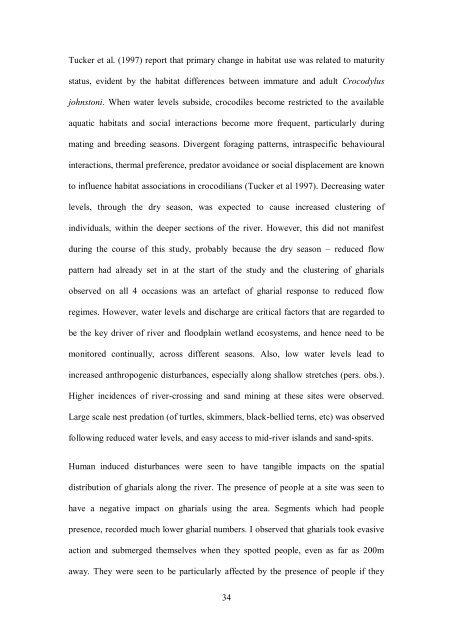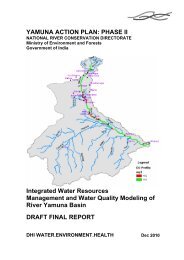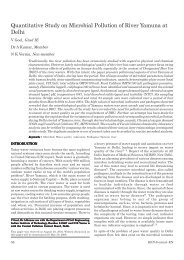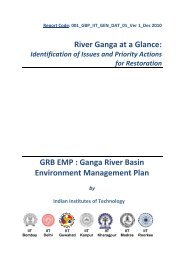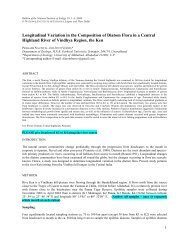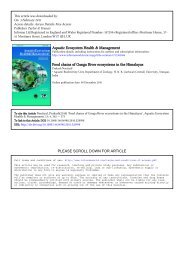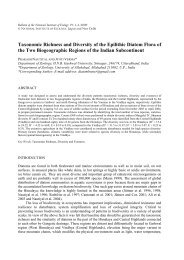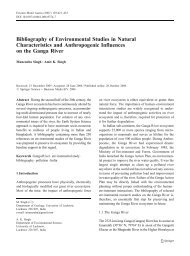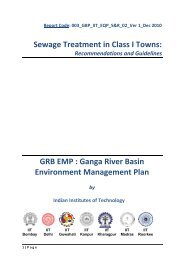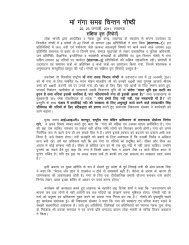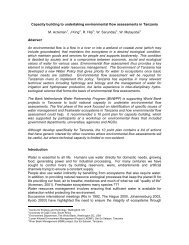Ecological and anthropogenic covariates ... - GANGAPEDIA
Ecological and anthropogenic covariates ... - GANGAPEDIA
Ecological and anthropogenic covariates ... - GANGAPEDIA
Create successful ePaper yourself
Turn your PDF publications into a flip-book with our unique Google optimized e-Paper software.
Tucker et al. (1997) report that primary change in habitat use was related to maturity<br />
status, evident by the habitat differences between immature <strong>and</strong> adult Crocodylus<br />
johnstoni. When water levels subside, crocodiles become restricted to the available<br />
aquatic habitats <strong>and</strong> social interactions become more frequent, particularly during<br />
mating <strong>and</strong> breeding seasons. Divergent foraging patterns, intraspecific behavioural<br />
interactions, thermal preference, predator avoidance or social displacement are known<br />
to influence habitat associations in crocodilians (Tucker et al 1997). Decreasing water<br />
levels, through the dry season, was expected to cause increased clustering of<br />
individuals, within the deeper sections of the river. However, this did not manifest<br />
during the course of this study, probably because the dry season – reduced flow<br />
pattern had already set in at the start of the study <strong>and</strong> the clustering of gharials<br />
observed on all 4 occasions was an artefact of gharial response to reduced flow<br />
regimes. However, water levels <strong>and</strong> discharge are critical factors that are regarded to<br />
be the key driver of river <strong>and</strong> floodplain wetl<strong>and</strong> ecosystems, <strong>and</strong> hence need to be<br />
monitored continually, across different seasons. Also, low water levels lead to<br />
increased <strong>anthropogenic</strong> disturbances, especially along shallow stretches (pers. obs.).<br />
Higher incidences of river-crossing <strong>and</strong> s<strong>and</strong> mining at these sites were observed.<br />
Large scale nest predation (of turtles, skimmers, black-bellied terns, etc) was observed<br />
following reduced water levels, <strong>and</strong> easy access to mid-river isl<strong>and</strong>s <strong>and</strong> s<strong>and</strong>-spits.<br />
Human induced disturbances were seen to have tangible impacts on the spatial<br />
distribution of gharials along the river. The presence of people at a site was seen to<br />
have a negative impact on gharials using the area. Segments which had people<br />
presence, recorded much lower gharial numbers. I observed that gharials took evasive<br />
action <strong>and</strong> submerged themselves when they spotted people, even as far as 200m<br />
away. They were seen to be particularly affected by the presence of people if they<br />
34


